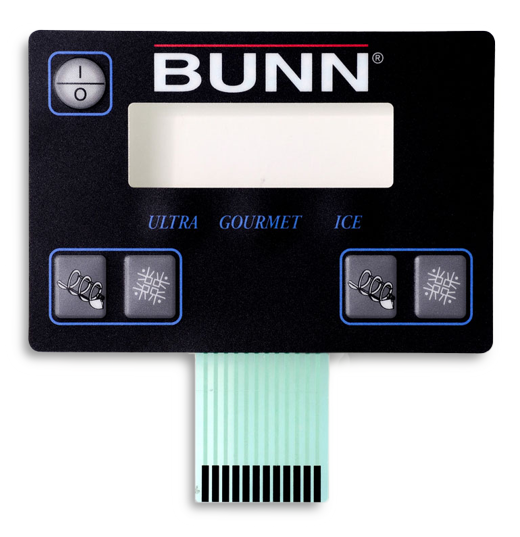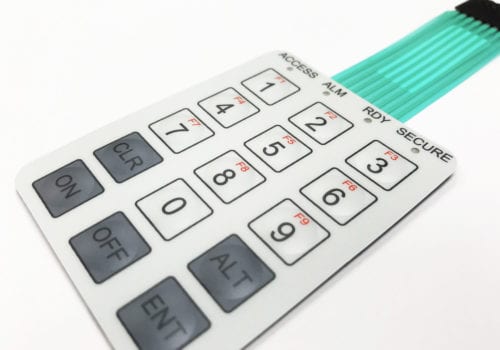Just How Membrane Switches Supply Smooth Operation in Rough Settings
Just How Membrane Switches Supply Smooth Operation in Rough Settings
Blog Article
The Ultimate Resource on Membrane Changes: Design, Performance, and Applications
Membrane layer changes offer as an interesting crossway of style and performance, playing a crucial role in modern user interfaces throughout numerous markets. As we discover the varied applications of membrane layer switches, it ends up being noticeable that their flexibility and durability are important in atmospheres varying from healthcare to consumer electronic devices.

Recognizing Membrane Layer Switches
Membrane layer switches are a sort of individual interface modern technology commonly made use of in numerous electronic tools, identified by their slim, flexible style and capability. These switches include numerous layers that consist of graphic overlays, glue layers, and circuitry, allowing a small and effective user interface for individuals. They can be located in appliances, medical devices, and industrial control board, providing a reputable approach for customer communication.
One of the key advantages of membrane switches is their capacity to stand up to pollutants such as dust and wetness, making them ideal for environments where durability is necessary. Their low-profile layout permits seamless combination into various applications, while the adjustable graphic overlays improve user experience by offering clear visual comments. Additionally, membrane buttons can accommodate a selection of technologies, such as responsive comments and backlighting, additional boosting their functionality.
The manufacturing process for membrane switches generally involves screen printing, die-cutting, and lamination strategies, guaranteeing accuracy and consistency in manufacturing. On the whole, membrane layer changes represent a versatile and efficient option for contemporary digital tools, combining performance with aesthetic appeal in user interface layout.
Key Components and Design Components
A variety of key components and style elements collaborated to create an effective membrane layer switch. At the core, the visuals overlay serves both practical and aesthetic objectives, offering an easy to use interface while securing internal elements from ecological variables. The option of materials, generally polyester or polycarbonate, affects toughness and tactile feedback.
Below the overlay, the adhesive layer makes certain the switch sticks firmly to the substratum, which can be glass, plastic, or steel. The spacer layer is crucial, as it preserves the needed gap between the overlay and the circuit layers, permitting effective actuation. Membrane Switches. Circuit traces, normally made from conductive ink or adhesive, are printed on a versatile substrate, enabling electric signals to be sent when stress is applied
Design factors to consider likewise include the arrangement of responsive domes or embossing that give physical responses to the customer, boosting the overall experience. Additionally, the layout and spacing of the switches should be maximized for simplicity of use, guaranteeing that customers can browse the user interface with ease. Overall, these parts and layout components function synergistically to develop a reputable, functional membrane layer switch tailored to details applications.
Capability and Procedure Mechanism
At the heart of efficient capability for membrane switches over lies their operational system, which facilitates individual interaction with a basic yet effective style. These buttons run on the concept of pressure activation, where a user applies force to a designated area of the button (Membrane Switches). This activity compresses the layers of the button, completing an electric circuit that sends a signal to the connected device
The building and construction normally consists of a leading graphic layer, a glue spacer layer, and a bottom circuit layer, which jointly form a robust interface. When pressure is applied, the leading layer collapses versus the lower circuit layer, allowing conductive traces to attach. This design not only makes it possible for clear responsive feedback yet also makes certain resilience and integrity, as the buttons are usually resistant to dirt and moisture.
Additionally, special info the adaptability of membrane switches permits for assimilation with numerous modern technologies, consisting of LED indicators and microcontrollers, improving their performance. By offering a structured user interface that lessens mechanical wear, membrane switches over remain a preferred option in applications varying from consumer electronic devices to industrial devices, making sure optimal efficiency and user satisfaction throughout diverse settings.
Kinds of Membrane Layer Buttons

Another considerable classification is illuminated membrane layer buttons, which integrate backlighting to improve presence in low-light problems. These buttons are frequently made use of in control panels and dashboards where clear presence is crucial.
Furthermore, there are personalized membrane switches over designed to meet specific dimensional, visual, and useful demands. These personalizations can include distinct forms, shades, and designs, enabling smooth integration into different devices.

Applications Across Numerous Industries
Just how do membrane layer buttons enhance performance across diverse industries? In the clinical sector, membrane buttons play a critical duty in gadgets such as diagnostic equipment and patient monitoring systems, where integrity and ease of cleansing are vital.
In the vehicle industry, membrane buttons are typically used in dashboards and control panels, providing instinctive controls that boost driver safety and security and convenience. The consumer electronics industry additionally takes advantage of their customizable and light-weight functions, allowing smooth layouts for mobile phones and home appliances.
Furthermore, membrane layer buttons discover applications in commercial automation, where they add to reliable machinery procedure and surveillance systems. Their resistance to dirt and wetness makes sure functionality sought after problems (Membrane Switches). Additionally, the food and beverage sector uses membrane layer switches for devices control, where health and toughness are critical
Verdict
To conclude, membrane switches represent a crucial wikipedia reference development in interface innovation, defined by their unique layout and capability. Their crucial elements, consisting of graphic overlays and circuit traces, add to their functional performance via stress activation. The convenience of membrane layer changes facilitates their application across varied sectors, from clinical tools to customer electronics. This thorough understanding reinforces the importance of membrane layer switches in enhancing product usability and resilience in contemporary technological environments.
Membrane switches over serve as an intriguing junction of design and functionality, playing a crucial function in modern user interfaces across various industries.Membrane buttons are a type of individual interface modern technology widely used in various electronic tools, defined by their slim, versatile style and capability.At the heart of reliable capability for membrane layer changes lies their functional mechanism, which promotes user interaction via a straightforward yet effective layout. These switches operate on the concept of pressure activation, where go to this website a customer applies pressure to a designated location of the button.In conclusion, membrane layer changes represent a crucial development in individual interface modern technology, characterized by their special style and performance.
Report this page